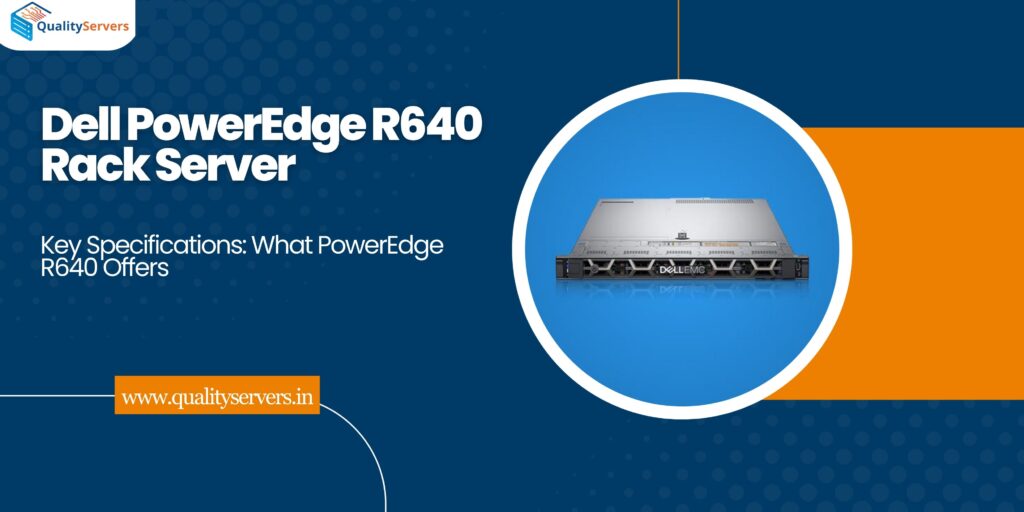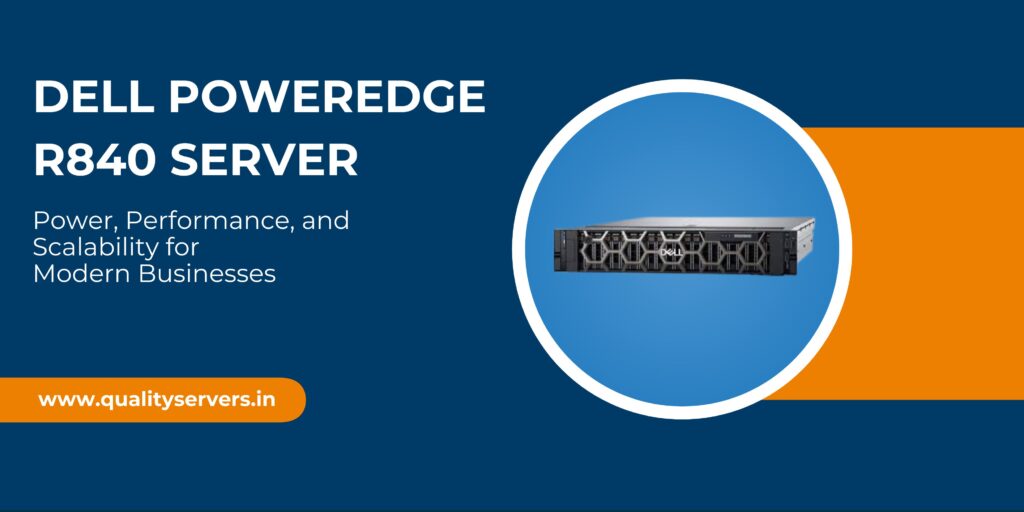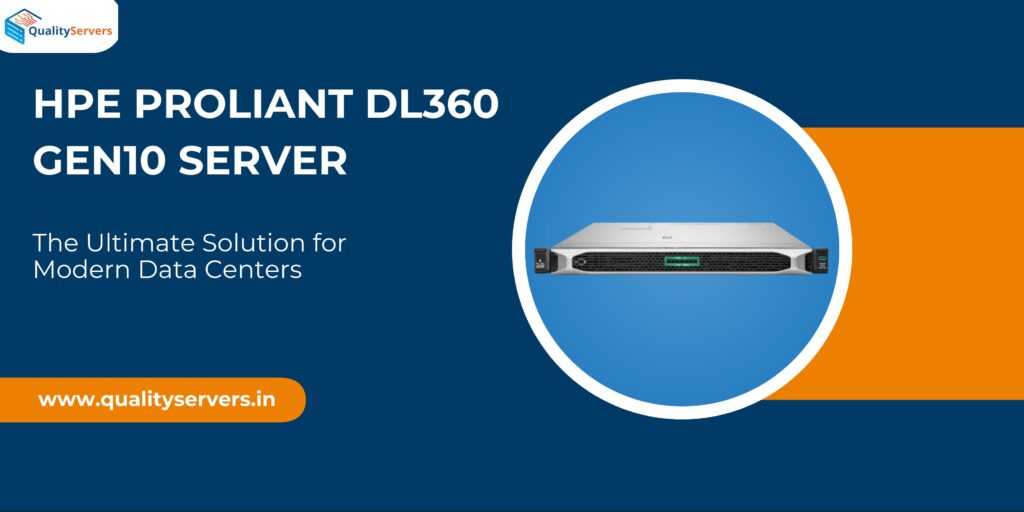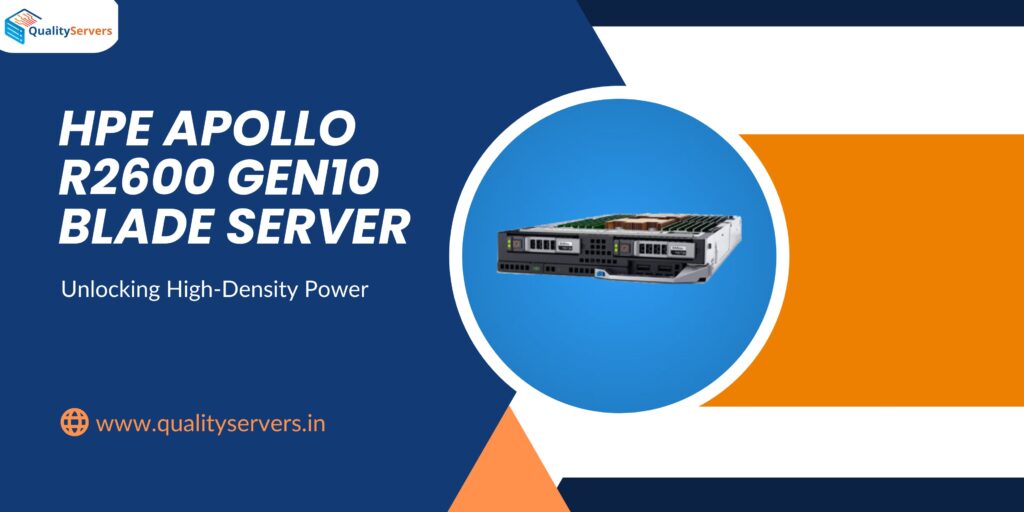In today’s digital-first world, robust infrastructure is the backbone of every business—large or small. Whether you’re running virtual machines, hosting workloads in the hybrid cloud, enabling big data analytics, or powering high-density scale-out data centers, choosing the right server matters.
Enter the Dell EMC PowerEdge R640: a high-performance, 1U dual-socket rack server designed for scale, speed, efficiency, and flexibility. In this post, you’ll learn what makes it special, what technical specs define it, where it fits best, and how it helps you get more ROI (return on investment).
Key Specifications: What PowerEdge R640 Offers
Here are the core technical features that make the R640 stand out:
- Processor & Performance
The R640 uses the 2nd Generation Intel® Xeon® Scalable processor family, offering up to 28 cores per CPU. This dual-socket setup gives enormous compute capability for dense workloads. - Memory Capacity
It supports up to 24 DIMMs of DDR4 (RDIMM, LRDIMM), plus support for Intel Optane DC persistent memory (DCPMM), depending on configuration. That means high memory bandwidth, great for virtualization, in-memory databases, and demanding applications. - Storage Options & Flexibility
- Up to 10 x 2.5-inch front drive bays with NVMe/SAS/SATA options, or front/rear mixed configurations.
- Maximum internal storage (SAS/SATA/NVMe) that allows up to ~ 76.8 TB in some configurations.
- Also supports persistent storage in the form of NVMe drives for ultra-low latency.
- Networking & I/O
Flexible network interface options: embedded NICs, multiple PCI Express Gen3 slots, OCP network adapters, etc. The I/O design ensures good throughput, low latency. - Management & Security
Dell’s iDRAC9 with Lifecycle Controller is built in, offering remote management, firmware updates, monitoring, etc. Security features include cryptographically signed firmware, Secure Boot, and secure supply chain assurances. - Physical & Power Efficiency
As a 1U form factor, the R640 saves rack space. It offers power-supply options including platinum rated units. The server is designed for efficiency: thermals, power draw are optimized to scale out many units in data centers without ballooning electricity or cooling costs.
Use Cases: Where the R640 Shines
Knowing the specs is one thing; knowing where to deploy the server for maximum benefit is another. The R640 is ideal for:
- Virtualization & Private Cloud
With its high core count, large memory capacity, and fast storage options, it handles multiple virtual machines and container workloads efficiently. - High-Density Scale-Out Environments
Data centers or edge compute sites needing many servers in limited rack space benefit from the 1U form factor and flexible storage/NVMe configuration. - Big Data / Analytics / AI Workloads
Tasks that require fast I/O (NVMe), large memory, and solid processing power see a boost. While GPU-accelerated tasks may need specialized hardware, the R640 supports accelerators in certain configurations. - Software-Defined Storage (SDS) & Hyper-Converged Infrastructure (HCI)
Given its mix of storage options, high memory, and modern CPU features, the R640 works well for SDS stacks like VMware vSAN, Ceph, or Microsoft Storage Spaces Direct. - General Purpose and Web Hosting
It’s overpowered for simple tasks, yes; but that means great headroom and reliability for web hosting, application servers, or backend services where performance matters.
Advantages & Trade-Offs: What You Gain & What to Watch
Advantages
- Scalability: You can scale memory, CPU, storage per your needs.
- Density: More computing per rack unit.
- Flexibility: Mixed drive types, NIC choices, accelerators.
- Enterprise-grade reliability: Management tools, security features, Dell’s support.
Trade-Offs / Things to Consider
- Cost: High performance and enterprise features come at a premium. Initial capital cost may be higher than bare-bones servers.
- Power & Cooling: Even optimized, high density means good power distribution and cooling infrastructure are essential. If your data center is old or poorly ventilated, you may face thermal bottlenecks.
- Upgrades / Maintenance Complexity: Given the modularity, upgrades in storage or memory must align with configuration; support contracts, firmware updates, etc., must be managed well.
Optimization Tips: Getting the Most from R640
To fully leverage the strengths of the R640, here are some actionable tips:
- Choose the Right CPU Mix: If you’ll run virtualization or many small tasks, prioritize more cores over higher single-thread speed. For databases or workloads sensitive to latency, balance core count with clock speed.
- Maximize NVMe for I/O-Intensive Workloads: Use NVMe drives especially for data caching, high throughput workloads.
- Use Persistent Memory where Needed: If your applications support it (for example in large-memory databases or in-memory computing), DCPMM can offer performance and persistence benefits.
- Stay Up-to-Date on Firmware & Drivers: Use Dell’s iDRAC LifeCycle Controller. Secure firmware and signed updates help with security and compatibility.
- Monitor & Tune Thermal / Power Settings: For high workloads, monitor temperature hotspots. Set appropriate fan curves, consider rack airflow, and remove obstacles.
Real-World Performance & Customer Feedback
Many users report that the R640 provides excellent reliability under heavy virtualization loads. For example, data centers consolidating many small VMs onto fewer physical servers benefit from its high memory and storage density. Some common feedback includes:
- Pros:
- Low latency NVMe storage greatly improves database and real-time analytic queries.
- Great power efficiency for its class; when correctly configured, many units can be run without outrageous electricity bills.
- Excellent support from Dell, especially for firmware, remote management, and proactive diagnostics.
- Cons:
- Upfront costs are high, so ROI depends on utilization. Under-utilized servers still incur fixed costs.
- Complexity: to get best results, one must understand hardware details (drive types, memory configuration, firmware). Poor configuration can lead to bottlenecks (e.g., I/O, network).
Conclusion: Is the PowerEdge R640 Right for You?
If you’re looking for a densely packed, high performance, flexible 1U server that can handle virtualization, heavy storage demands, and modern workloads—yes, the Dell PowerEdge R640 is an excellent choice. It offers the power, expandability, and enterprise-grade management features to support demanding IT environments.
However, if your needs are modest—light web hosting, simple applications, low storage demands—you might find more cost-effective options. The key is to match what you need now and anticipate what you’ll need in 2-3 years.
Final Thoughts / Call to Action
Are you planning to upgrade your server infrastructure or deploy new applications that demand higher performance? The PowerEdge R640 should be on your shortlist. Be sure to:
- Benchmark your workload
- Project your storage and NVMe needs
- Plan for power and cooling
- Work with reliable vendors
- Maintain firmware and management tools




